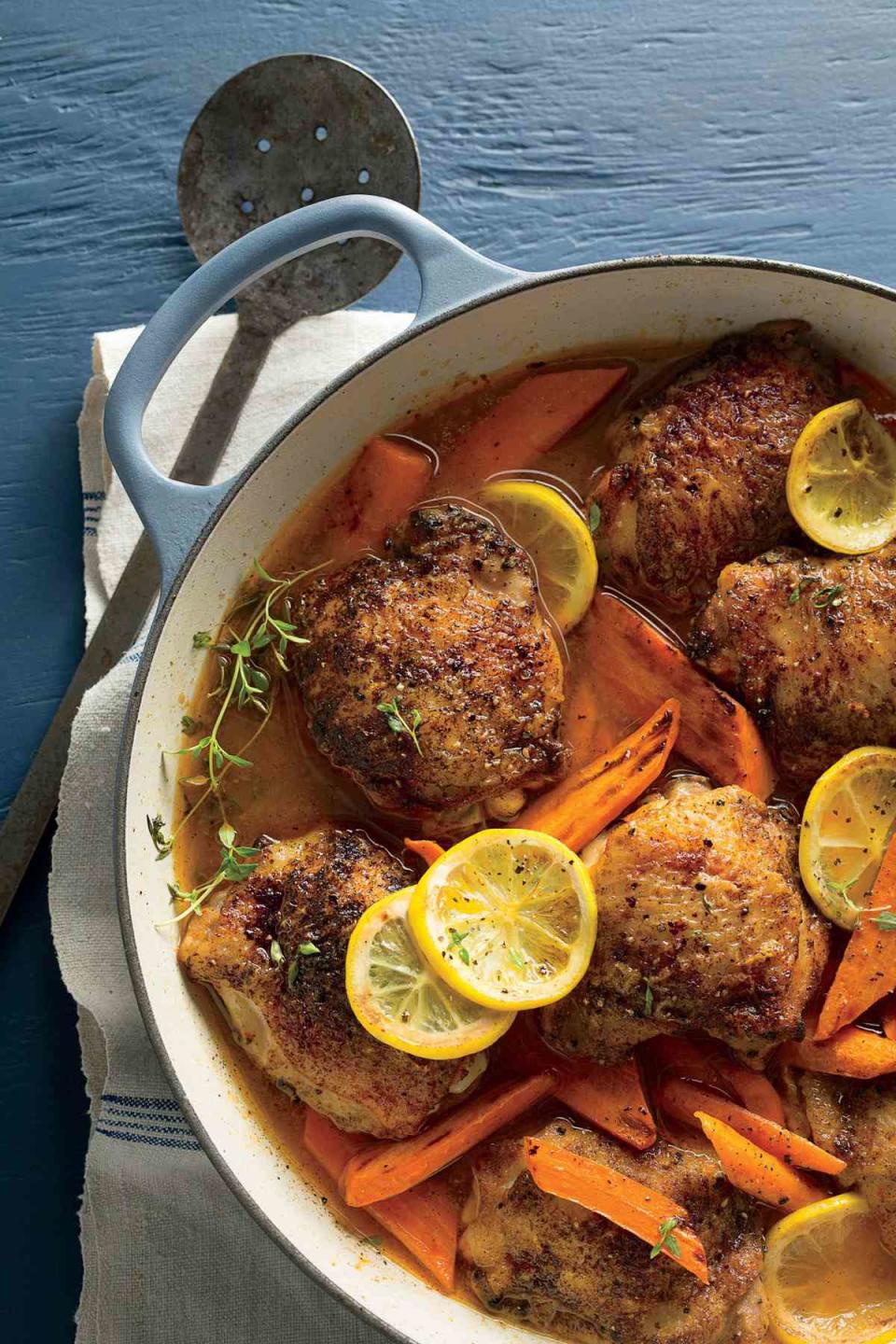5 Mistakes To Avoid When Cooking Chicken Thighs

Wanna know who deserves an apology? Chicken thighs. As if it isn't enough to be upstaged by a less flavorful chunk of meat (*ahem* chicken breasts), for reasons beyond explanation, this delicious portion of the chicken is too often brutalized atop the grill, on a skillet, or in the oven. By avoiding these five mistakes in preparing your chicken thighs, you'll gladly jump off the breast bandwagon and enjoy a poultry dinner with a clean conscience, innocent of the chicken-thigh atrocities committed in kitchens across the South every day. Here's how to make the most of this overlooked chicken portion.
Save the Skin
Chicken thighs aren't supposed to be pretty. Yet the boneless skinless chicken thighs packaged in the grocery store have been manicured to look more appealing than the lumpy skin-on chicken thighs sitting next to them (insert judging-the-book-by-its-cover saying). Don't be fooled—the bone makes the meat moist and tender, while the skin on a chicken thigh is like a full sponge ready to release mouthwatering juices into the meat underneath it as it cooks. Additionally, the skin protects the meat from direct contact with the heat, which helps the thigh cook gently and retain its moisture. Stripping the thigh of its skin before cooking is a surefire step to mediocre meat. If you don't like eating chicken skin, wait until it has finished cooking to remove the skin, never before.

Hector Manuel Sanchez
Prep the Thighs
Before you cook the chicken, it's important to make sure the skin is dry. Pat the pieces dry with paper towels, whether straight from the package or after rinsing (rinsing is up to you). This ensures that the skin will cook up to a nice crisp. Then season as desired. Make sure to let the thighs sit at room temperature for 15 minutes before adding them to a hot pan. This helps ensure the outside of the chicken isn't done before the inside.
Cook the Thighs, Respectfully
Start by generously seasoning the meat with salt and searing the outside of the thigh (yes, the skin) in a cast-iron skillet with some oil. Start skin side down. Don't overcrowd the pan, and cook in batches if needed or you'll end up with soggy thighs. By browning the outside, you're ensuring a crispy exterior that will both protect the meat underneath and provide a nice contrast in texture for those of you who do eat the skin (which you should). It's important not to rush this step. Rendering the fat from the skin to make it crispy rather than chewy takes longer than just waiting for a change in color. Give it 10-15 minutes per side. Keep it from getting too dark by using low heat.
Finish the Thighs in the Oven
Once browned evenly on all sides, remove the thighs from the pan, add a little more oil to the pan, and cook whatever vegetables and aromatic elements you would like to use to flavor the chicken (onions, lemon, mushrooms, tomatoes, fresh herbs, etc.). Saute until these ingredients have gained some color, nestle the chicken thighs into the ingredients in the cast iron skillet, and place the cast iron in a preheated oven until the chicken is done. By finishing the process in the oven, you ensure that the meat cooks evenly. Use a thermometer to check for doneness because overcooked chicken will have a rubbery texture.
Avoid Steam
When the meat is done cooking, don't cover it as it rests. A tent will just create steam, which will soften the crispy skin. It's also important not to cover the thighs in the oven as you finish them. This, along with overcrowding in the pan during browning, will create moisture around the thighs and rubbery skin.
With these tips, you're free as a bird to enjoy the full potential of this unsung hero! Try our trusted chicken thigh recipes. You might also enjoy 13 Ways to Ruin Fried Chicken.